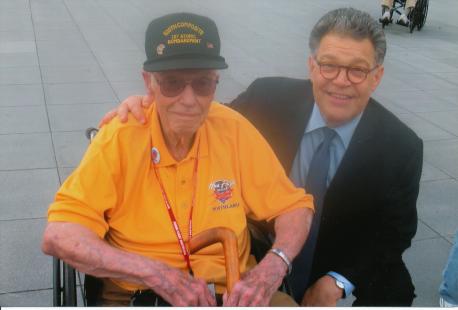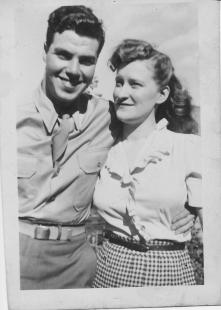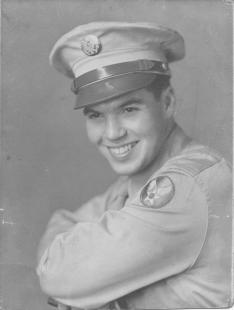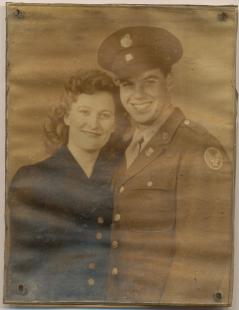George Edison Taylor
Era: World War II
Military Branch: Army




George Edison Taylor served in World War II.
He joined the U.S. Army Air Forces in 1943 and served until 1945. The first time he received a draft notice, he requested and received a deferment: His father was disabled following a naphtha gas explosion at the dry cleaning shop that the family owned.
In the meantime, Mr. Taylor was hired by the National Youth Administration, a New Deal program that was originally part of the Works Progress Administration and that focused on educating and hiring Americans between the ages of sixteen and twenty-five. In that capacity, he helped construct the tennis court at Duluth State Teachers College Old Main campus, now the University of Minnesota Duluth.
After receiving a second draft notice, Mr. Taylor was sent to Keesler Field in Biloxi, Mississippi, for basic training in the Army Air Forces. He was assigned to the Eastern Signal Corps Training Center in Fort Monmouth, New Jersey, for training in aviation radio repair. There he spent half of his time in class and half in combat readiness training. He expected that he would be assigned to the European Theater.
Instead, he was assigned to Composite Group 509, a classified Army Air Forces unit established in December 1944 that was tasked with developing a way to deliver an atomic weapon by airplane against targets in Germany and Japan. They used mostly modified B-29s and they trained at Wendover Army Air Field in Utah and elsewhere in the southwest. Unbeknownst to Mr. Taylor, F.B.I. agents had interviewed family and friends in Duluth to determine whether he was a security risk.
Within Composite Group 509, Mr. Taylor was assigned to the 1027th Materiel Squadron. The squadron already had radio repair support personnel, so he primarily took care of inventory, tracking incoming and outgoing materiel.
Composite Group 509 was sent to Tinian and Saipan in the Mariana Islands. Although his aviation radio repair work was limited, he did work aboard the Enola Gay. His unit flew several combat missions with airplanes armed with conventional bombs that were consistent with the size specifications of atomic bombs as well as rehearsal drops of inert replicas of atomic bombs. His group dropped the two atomic bombs on Japan, one on Hiroshima on August 6, 1945, and one on Nagasaki on August 9, 1945.
Mr. Taylors’ rank was Corporal.
Mr. Taylor was born in Duluth, Minnesota, in 1922, the son of Arthur John and Violet (Montgomery) Taylor.
Source: Interview with staff of Veterans’ Memorial Hall; veteran’s account (below)
“People have sometimes accused me, ‘Don’t you feel bad about being involved in dropping the bomb on Japan?’”
Mr. Taylor said this has always been hard to hear. “I’ve always answered that my primary concern, my job, was taking care of American lives.”
But on the Honor Flight in May 2012, he spoke with another veteran, one who had served in Europe. He had a different take on Mr. Taylor’s impact on the war.
Mr. Taylor recounts, “On the Honor Flight, I was speaking with a veteran who was sitting behind me. He had been in the Battle of the Bulge and in another major offensive in Europe. When the war in Europe ended, his unit was going to be sent to the Pacific to fight against the Japanese. I told him that my unit had been involved in the bombing of Japan.
Mr. Taylor continued, “This veteran told me, ‘I don’t know if I could have taken being in major combat a third time. So when we heard that you guys had bombed Japan--I felt like you saved my life.’”

